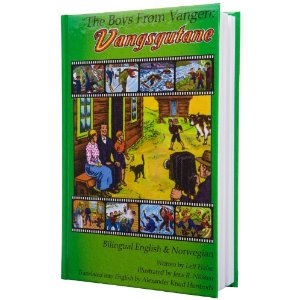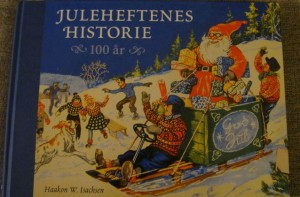|
Christmas Comics or Julehefter"Julehefter" still popular, at age 100 December 23, 2011 For many Norwegians, Christmas just isn’t Christmas without a stack of new julehefter (a form of seasonal comic books) to read through and enjoy a nostalgic chuckle. This year, the colorful booklets are celebrating their 100th anniversary, and are more popular than ever. One avid collector of "julehefter" ended up writing a book about them, on their 100th anniversary. "I’ve had a thing about julehefter since my mother made sure it was part of our Christmas traditions at home," Haakon W Isachsen told newspaper Dagsavisen recently. He's an editor at Egmont, which publishes around 80 percent of julehefte market in Norway, and also just wrote a book tracking the julehefte's history. Christmas Comics - Julehefter
Most of the booklets are akin to elongated versions of comics, with Donald Duck a favorite along with Knoll and Tott, Stomperud and Pondus. Norway is said to be one of the few if not only countries where there’s a big market for the seasonal comic books that collectors will buy and cherish for years. "Folks still want titles they’ve grown up with themselves," Isachsen said, noting that Stomperud in particular is aimed right at the Norwegian soul: "They’re all about traveling home for Christmas, home to the farm, to traditions and everything familiar."

The Boys from Vangen – Vangsgutane Vangsgutane has been a classic series in Norway since 1941. Now available in America for the first time! Currently serialized in the Norwegian-American Weekly newspaper. Great book for learning Norwegian and/or English! Right after WWII, Vangsgutane was used as curriculum material in Norwegian schools, as the series had easy-to-read text with pictures. This hardcover, full-colored book is for all ages with bilingual text and pictures throughout the stories. Following the loss of their father, the boys from the Vangen farm—Steinar and Kåre—tackle their father’s fieldwork and fulfill his unfinished lumber contract obligation. Honest and quick-thinking, the boys become role models for Norwegian children through their numerous adventures and close calls, some involving a troublesome neighbor boy, Larris.
The Boys from Vangen - Vangsgutane Christmas Comics  Custom Search 
|

